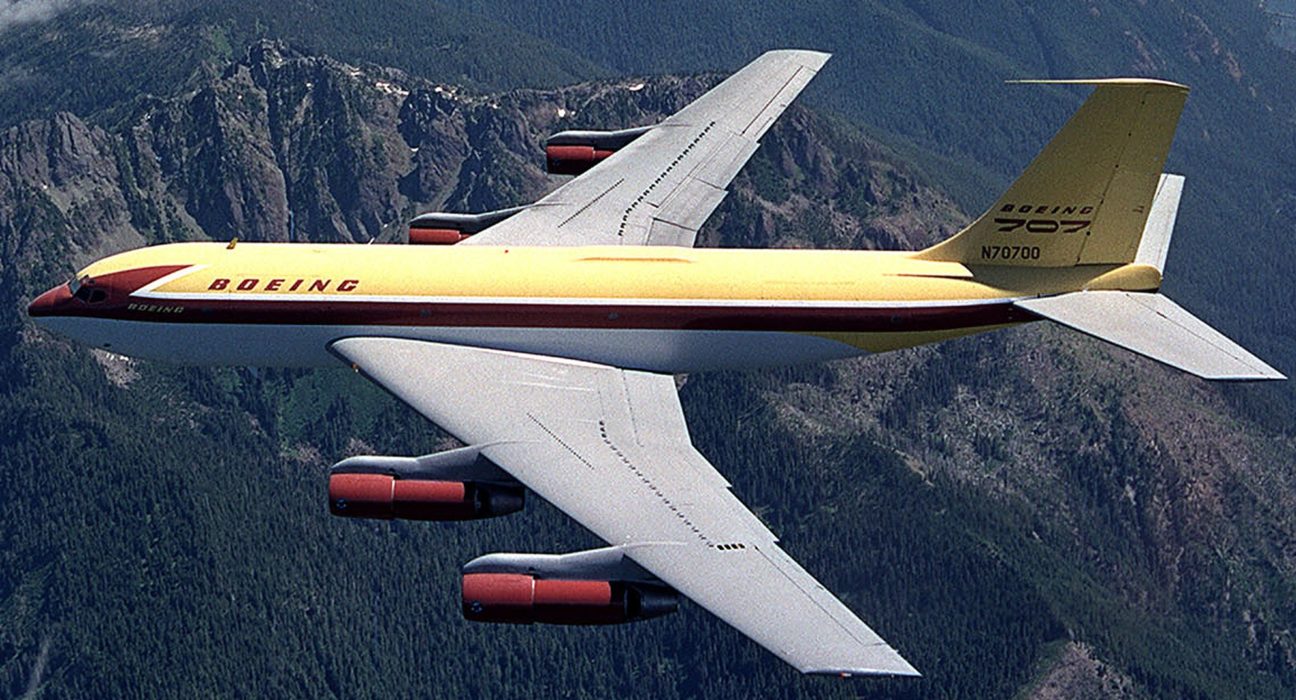
DALLAS – 12/20/1957 Today in Aviation, the original 707-120 developed by Boeing Commercial Airplanes as its first jetliner performed its maiden flight in 1957.
Boeing derived the 707-120 from the Boeing 367-80 prototype that flew in 1954. Boeing 707 service started regularly on October 26, 1958, with Pan American World Airways, up until 1979.
The long-range narrow-body Boeing 707, with a maximum take-off weight almost twice as high and a maximum range almost twice as long as other aircraft from the time, is accredited to have kickstarted the jet age. This was because it introduced the most prolific design family in the industry, one that advanced relentlessly by adding another ten models to its diverse lineup.

The Inception of the Boeing 707
The Boeing 707 had a military pedigree, as the company was known then for its military aircraft manufactured during and after World War II.
After World War II, the British spearheaded commercial jets with the de Havilland Comet. But, structural problems led to catastrophic accidents, and the Comet was grounded, along with enthusiasm for commercial jetliners. However, Boeing Company President William Allen and his management decided to “bet the company” on a vision that the future of commercial aviation was jets.
The 707 began as an in-air refuelling tanker prototype for the company. Further development led to the KC-135A Stratotanker and finally to a four-engine passenger aircraft powered by turbo-jet Pratt & Whitney small-diameter engines, each with a thrust of about 50 kilonewtons. By comparison, each of the two turbofan high-bypass General Electric GEnx-1B engines powering today’s Boeing 787 delivers more than 300 kN at take-off.

Design of the 707
Inspired by the work of Adolph Busemann of Germany, the designers of the Boeing 707 swept its wings further back than the de Havilland team did with the Comet. As the 707’s wings were swept back at 35 °, the aircraft showed an undesirable “Dutch roll” flying characteristic that manifested as an alternating combined yawing and rolling motion.
An interesting design decision was that while the Comet’s four engines were embedded in the wing by De Havilland, causing drag, Boeing had a more unusual concept, which it first tested on the company’s 367-80 or “Dash 80” prototype (featured image) and integrated into the 707: it slung the engine pods under the wing.
This innovative design made the 707’s pylons direct the airflow over the wing on a straight path. This engine placement decision has been replicated by manufacturers ever since.

The Legacy of the Boeing 707
In the 1960s, it dominated passenger air transport and remained prevalent in international, transcontinental, and transatlantic routes and in freight and military applications through the 1970s.
The first successor, in 1963, was the three-engine Boeing 727. The four-engine 747, launched in 1969, was perhaps the most innovative concept in modern aviation. Meanwhile, Boeing’s newest addition, the revolutionary 787 Dreamliner, launched in 2011, was the first aircraft made of carbon fibre composites, capable of flying more than 17 hours on routes.
On December 20, 1957, the first Boeing 707–120 flight took place, and FAA certified the type on September 18, 1958. The first Iven C. Kindercheloe Award for test flights that resulted in the 707 certification was awarded to both test Pilots Joseph John “Tym” Tymczyszyn and James R. Gannett.

SAM 970
SAM (Special Air Missions) 970 is the name of the first presidential jet plane, a specially built Boeing 707-120. When the president was aboard, this plane, like any other Air Force plane, was given the call sign “Air Force One.” The high-speed jet transport, delivered in 1959 to replace Eisenhower’s Super-Constellation, was a flying Oval Office with a redesigned interior and sophisticated communication technology. In the early 1960s, it was upgraded to the B “Turbofan” standard.
Presidents Eisenhower, Kennedy, Johnson, and Nixon, and VIPs such as Nikita Khrushchev (on a tour of the United States) and Henry Kissinger, have all flown on SAM 970. (secret advance trips to China). By 1962, SAM 970 had been replaced by a newer Boeing VC-137C. During the Kennedy Administration, SAM 970 was replaced by Sam 2600 and 2700; however, SAM 970 remained in the presidential fleet until June 1996, ferrying VIPs and the Vice-President.
